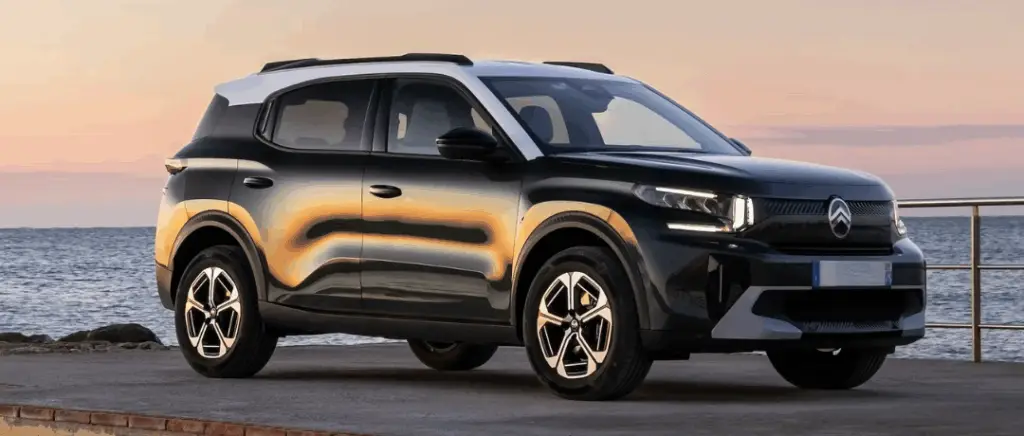Individual terminals
Individual charging points currently account for the vast majority of charging points in France. If you understand this, you'll be well on your way to becoming like 90% of the French who recharge either at home or at their place of work.
What is an individual charging point?
An individual recharging point is installed in a private context. Whether at home, or in your car park if you live in a condominium, you alone have control over the installation. Charging power varies between 3.7 and 22 kW, depending on your electrical installation (single-phase or three-phase).
To go further →Co-ownership charging point guide
Get a quote for
your charging point
How does an individual charging point work?
An individual charging point consists of a unit that receives the energy and distributes it to the vehicle via a charging cable.
The current standard uses the T2 connector, both on the terminal side and on the vehicle side. This connection system covers all electrified vehicles built after 2016, and the cable is often included with the purchase of a new electric vehicle. What's more, each individual charging point has its own power line, protecting your installation.
In addition, there are two aspects to securing a recharging point. The first is in front of the charging point. A differential switch and a circuit breaker must be installed. These two elements, installed on the electrical panel, ensure that your installation will not suffer any breakdowns or accidents.
The second is in the bollard itself: some bollards can be fitted with a "load shedding" module.
The bollard then calculates how much energy it can draw without blowing fuses. This secures the installation, preventing it from consuming more electricity than your installation can deliver.
Finally, the way in which a charge is started or stopped varies from one model of individual charging point to another. In the first case, the charging point has no remote management interface. In this case, simply connecting the cable to the vehicle activates the charge. Removing the cable stops charging. In the second case, your charging point is connected. The mobile interface allows you to connect your vehicle but start charging in the middle of the night, for example. This will enable you to optimise the cost of charging if you are on a peak/off-peak contract.
With technical progress in individual charging points proceeding apace, most of them now offer a remote management interface, even without an option.
To go further →Green'up or WallBox
Why install an individual charging point?
Individual bollards are, as their name suggests, reserved for personal use. They are located close to homes, so they can be used on a daily basis.
Once installed, owners recharge their vehicles an average of 95% using this method. With an average charge of around €7, it's the most reliable and economical solution for any individual wanting to ensure that their vehicle is recharged every morning..
Recharging time can vary depending on the power of the charging point. However, with a 7.4 kW installation, the vast majority of current electric vehicles can be fully recharged in less than 10 hours.
To go further → Charging point price
Make an appointment with one of our advisers
Public charging points
What is a public charging point?
Public pay stations are pay stations for shared use. They can be installed by companies that have free access to their car parks (restaurants, golf courses, etc.), by major retailers (supermarkets, shopping centres, etc.) or by public service infrastructures (town halls, training centres, etc.). Finally, some public charging points can be installed by a "mobility operator". These operators install charging stations open to the public in built-up areas and charge a subscription fee. In all cases, access is subject to varying conditions, which I will explain below.
To go further →Aid for installing recharging points on company premises
How does a public charging point work?
Although they are called public, these charging points are not freely accessible. They are either part of a recharging network or are subject to conditions. A leisure establishment, for example, which has an interest in building charging points, may require that users be members of its clientele only. The way a charging point works in this situation can vary considerably from one establishment to another, so I advise you to find out more directly from the players involved.
As far as recharging networks are concerned, it's pretty straightforward. You can check that the charging points are charged and free, usually using an application. Your condition of access is a recharging card. This will enable you to unlock the charging point and start charging.
To go further →Restaurant charging point
For what purpose?
Use of public charging points is usually sporadic. Either you don't use your electric vehicle very much and one charge a week is enough to cover your weekly mileage requirements. Or you're on the move and need to recharge urgently. The reason for this frequency is the price. This can vary, but we're generally talking about twenty euros a charge. That's a far cry from the 7 euros you would pay for a home charging point.
Here are a few tips for charging at a public charging point: take your T2-to-T2 charger with you, find out the maximum power accepted by your vehicle, and lastly, do not exceed the 80% charging capacity of your vehicle. battery. The transition from 80% to 100% takes much longer, as the battery reduces the charge rate to avoid overcharging.
In conclusion:
To sum up, there are 2 types of recharging point.
- Individual terminals. These are installed in private locations, often in users' homes. They have low power ratings (from 3.7 to 22 kW). They are used on a daily basis, and the cost of recharging is very affordable (around €7 for a 7.4 kW charge).
- Public pay stations. These are installed in places open to the public (towns, businesses, supermarkets, etc.). They require a charging card to operate. They vary in power and can sometimes be used for rapid charging (less than 60 minutes). They are only used sporadically, often for emergency purposes, as they are relatively expensive.
I hope you now have a better understanding of the world of charging points. Getting to grips with it will give you peace of mind when you switch to electric. I hope you've enjoyed this article, and I look forward to seeing you soon in an electric car (if you haven't already).
If you would like to find out more aboutsupport for the installation of charging points for private customers in 2024For more information, see our article on this subject.

































